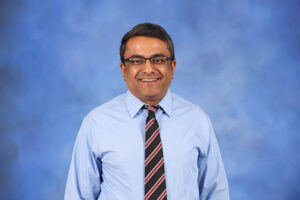During the Boston Marathon bombing, law enforcement gathered forensic evidence about what happened that day from eyewitness accounts, surveillance video and a massive amount of cellphone data from people who were there.
That information was invaluable in determining what happened, but it was a painfully slow process as law enforcement had to manually sift through it and create the context for what had happened.
The University of Alabama in Huntsville (UAH), in partnership with Florida State University (FSU) and Purdue University, is developing an artificial intelligence (AI) tool to help law enforcement target, extract and collate cell phone evidence related to an incident.
The research is funded by a two-year, $600,000 grant from the National Institute of Justice (NIJ).

Dr. Tathagata Mukherjee, an assistant professor in the Department of Computer Science at UAH, said the targeted forensics tool under development will not be used for tracking people but rather as a tool for collecting evidence from phones voluntarily provided to law enforcement by witnesses, to be used in court.
“This is pure forensics work,” said Dr. Mukherjee. “We had developed a targeted phone forensics application on a NIJ award back in 2016, and this work builds upon that and extends the application for multi-phone forensics targeted towards mass incidents like terrorist attacks or mass shootings.”
The work is likely to lead to patents, too. UAH will be responsible for implementing the AI and machine learning algorithms for the endeavor, FSU for the forensics and Purdue for the forensics and systems portion.
“The assumption is that the witnesses to an incident have evidence in their phones and this evidence needs to be extracted and correlated with data from other phones owned by other witnesses,” Dr. Mukherjee continued.
“Moreover, only evidence related to the incident needs to be extracted, hence it is targeted,” he said. “Naturally, AI needs to be involved in order to implement the targeted aspect of this work and we need to build the whole system for acquiring data from multiple phones and correlating it for creation of the context for the event under consideration.”
The graduate computer science students who will make up the research team have not yet been selected.
Don’t miss out! Subscribe to our email newsletter to have all our smart stories delivered to your inbox.



